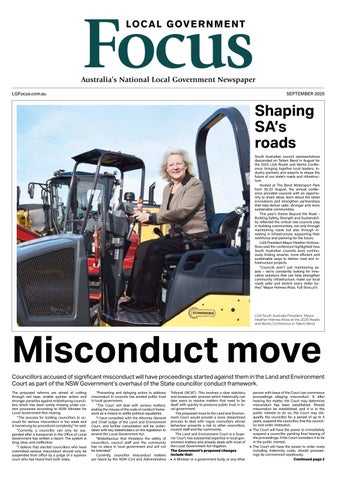by Karen Stanish *
Proposed changes to financial reporting, put forward in the Victorian Local Government (Democratic Reform) Bill, are due to come into effect this month, February 2004. The main changes include substituting Part 6 (Accounts and Audit) and Part 7 (Financial Provisions of the Local Government Act 1989) with new Parts 6 and 7, comprising Planning and Accountability Reports, and Financial Management. The applicable part of the Bill is in relation to ‘governance changes to improve transparency and probity; and more accountable financial management and public reporting’.
The changes affecting Local Government financial reporting ‘will require that Councils: manage financial risks prudently in regard to debts, assets and liabilities; have regard to the financial effects on future generations of Council decisions; and provide full, accurate and timely disclosure of financial information’. It is proposed that Council reporting will require standard financial, rating and capital works statements in Council plans, strategic resource plans, budgets and annual reports to ensure that they can be compared.
The good news
Current research findings have confirmed that ‘financial reporting in Local Government in Victoria adequately satisfies its stakeholder needs’. The findings were based on the results of two surveys, one forwarded to the preparers of the financial report (technical in nature) and the other to the users of this information (general).
Preparers of the financial report included all Councils in the Melbourne metropolitan region, of which 50 per cent responded ,14 City Councils. Users of the financial report included senior executives, Mayors and Councillors, directors, managers, ratepayers, residents and interested parties, of which 33 per cent responded.
The outcome of this research was overall very positive with 90 per cent of users being ‘satisfied/very satisfied’ with the financial report. The financial report preparers’ view on their users’ satisfaction level of the financial report presented to Council was less optimistic than the users. It is interesting to note that there were no responses for the unsatisfied category.
The survey
Survey participants were questioned on the financial report firstly in regard to its content, current information provided, the level of importance of that information, the number of pages contained and what users do with the report. Secondly, they were asked about their satisfaction with the frequency and accuracy of the report, how users obtain the financial report and accessibility of same; and lastly, their stakeholder identification, whether a Mayor, Councillor, director, manager, ratepayers, residents and interested parties, their gender, age group and level of education.
Other major findings
- Finance report preparers are knowledgeable on legislative requirements, have a comprehensive knowledge of the users interested in the finance report and supply more than the required information in multiple forms.
- The existing transparent financial reporting process indicates that Local Government is exceeding its legislative requirements and is ahead of its time.
- The provision of the finance report, more frequently than required and the short period end turnaround time that is most often met, satisfies the definition of timely, relevant and reliable financial information.
- 90 per cent of users rate accessibility of the finance report as either ‘easily accessible’ or ‘accessible’. They have on average two methods of obtaining the finance report from a choice of electronic copy (via email, Internet or intranet), hard copy from Local Government, or hard copy at Council meetings. There is a strong move towards electronic version by both users and report preparers.
- Based on the content of the finance report, users want more balance sheets, debtors reports and graphical information than the report preparers. This result needs to be investigated as to why these reports rate so highly for users and less so for the report preparers.
- Top three monthly reports to be included in the finance report based on the full survey criteria in order are the capital works report in summary, brief financial overview, and profit and loss statement.
The survey findings give a good insight for Councils to enable them to fully satisfy their stakeholders’ needs. In some cases, some very simple changes can lead to some positive changes in efficiency and effectiveness.
The minimal disclosure requirements of the new parts of the Local Government Act may mean that Victorian Councils will have to make changes to the current format and frequency of the finance report. It may be more prescriptive as to content, but may in fact be less than what is currently being provided by Councils. Some Councils will interpret the legislation more widely than others, but in essence they will be comparable. It will definitely provide an opportunity to make positive changes and market them effectively to the stakeholders.
Conclusion
It appears that most Councils are well placed to implement the proposed legislative changes to financial reporting due to the current levels of disclosure. The method of distributing the financial information is heading towards electronic delivery for both internal and external users. This will enable Councils to identify the individuals or groups interested in the financial information, leading to efficiencies and effectiveness of communication.
Once the guidelines and new regulations supporting the proposed changes to the financial reporting regime are available, Councils will be able to implement the changes taking into consideration user requirements.
A full gap analysis should be undertaken by all Councils to establish what their users want in the financial report in conjunction with legislative and Council guidelines.
* Karen Stanish is Finance Manager, Glen Eira City Council. The above survey was undertaken as part of her Master of Business (Accountancy).







